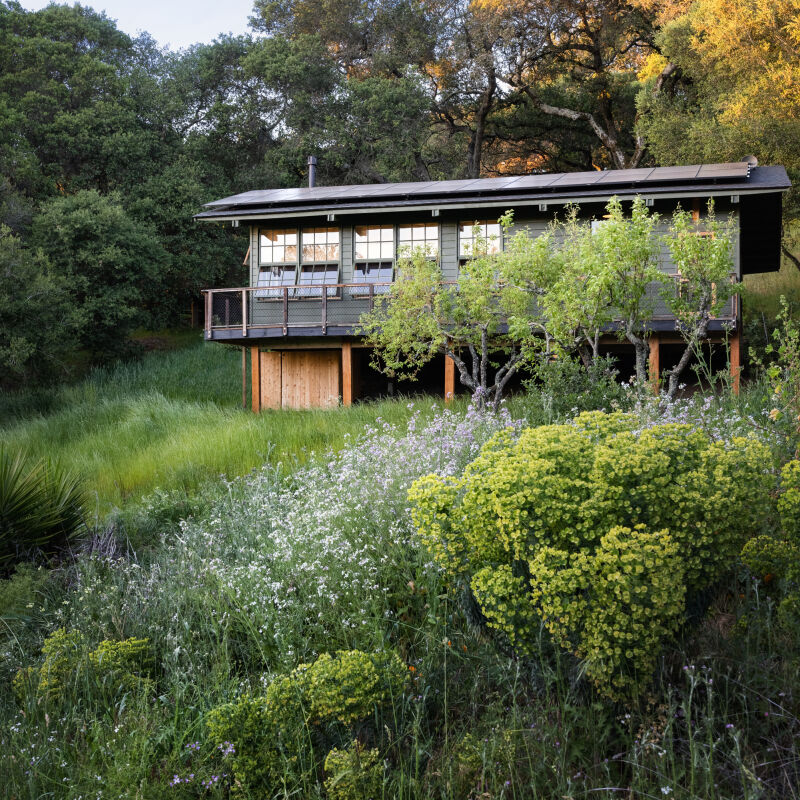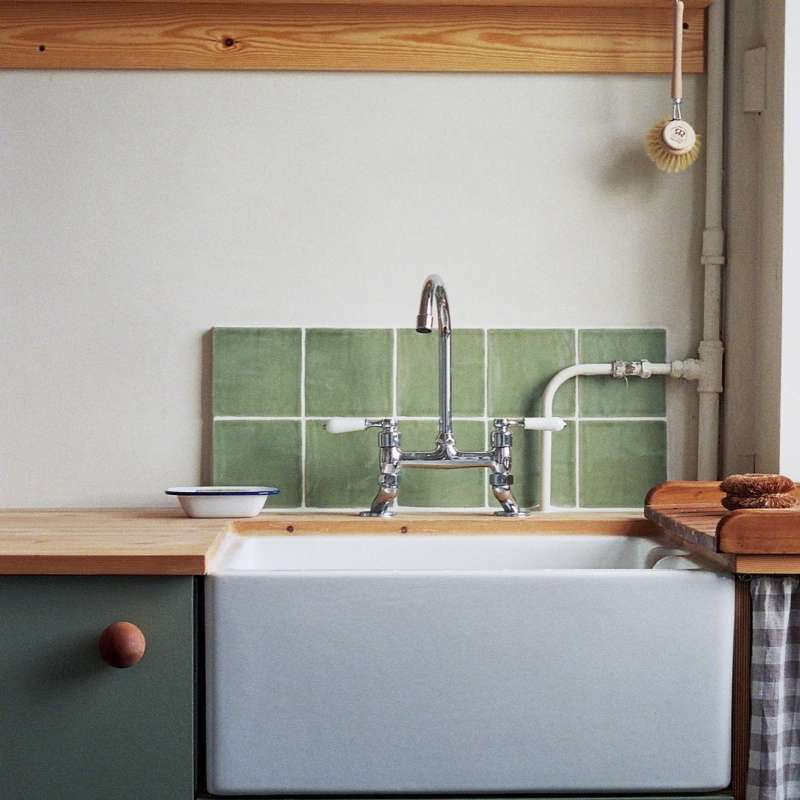Venmo, dishwashers, those Instagram filters that give tired faces a glow-up—we can all agree our world has benefited from progress. But some things don’t need to be improved upon. Case in point: pine tar.
Pine tar has been in existence since the days of the plundering-and-pilfering Vikings, who distilled the stuff in large quantities and used it to preserve their wooden ships. If it’s potent enough to waterproof these vessels that sailed the rough waters of the North Sea, it’s surely good enough to protect your wood fence, deck, garden shed, barn, or home.
To learn more about pine tar, we reached out to the folks at Earth & Flax and Sage Restoration, two North American companies that specialize in natural Scandinavian paints and wood finishes, as well as Emil Jespersen, cofounder of Danish-Norwegian architecture firm Jespersen Nødtvedt, who recently worked with pine tar on a project for a client.
What is pine tar?

Pine tar is a natural marine-grade wood preservative. Traditional pine tar was made by essentially cooking down pine stumps in fire pits to yield a syrup-y, dark-colored, and resin- and turpentine-rich liquid. Today, most pine tar products are produced in kilns (using heat only).
Post-Viking Age, pine tar is primarily used as a finish for decks, fences, facades, and roofs in Scandinavian countries, but interest in the wood preservative is growing in the U.S. “What’s old is new again. People are looking for alternatives to modern chemical finishes, and architects are looking for something new to offer clients,” says Michael Sinclair of Sage Restoration, which is based in Tamworth, Ontario. “Our sales have been increasing every year.”
Natalie Yon Eriksson, founder of Philadelphia’s Earth & Flax, agrees. “This trend is going strong. Pine tar has been used with or in place of the traditional Japanese shou sugi ban burned or charred siding treatment,” she says. “The best aspects of pine tar are that it is sourced from nature, using a waste product from the timber industry, and is an exceptional natural wood preservative.”
What can it be used on?

Any bare wood—including plywood—that’s exposed to the outdoors and needs to be weather- and insect-proofed. You can apply pine tar to new wood, old wood, as well as pressure-treated wood.
“It is primarily used on timber frame, cabin, and barn structures, but increasingly common for modern architectural designs as well,” notes Yon Eriksson, adding: “Someone would probably not use pine tar for a Victorian or Greek Revival. Not that it cannot be done, just that it would not follow typical aesthetic for those styles.”
Pine tar was an ideal option for the summerhouse project that Jespersen worked on last year. “The client wanted to experiment with different sustainable materials. And pine tar is a natural material that patinas nicely and that suits a summerhouse close to nature,” he says.
And because pine tar has no petrochemicals and additives, it’s a safe way to preserve the wood on raised vegetable beds.
Do pine tars come in different colors?

Pine tar is sold in both un-pigmented and pigmented versions, though colors available are limited to earth tones (think: black, brown, gray, dark green, and red). You’re out of luck if what you want is a bright hue. Pigmented pine tars get their tint from iron oxide or earth pigments.
How do you apply pine tar?

If you hire a professional, “look for painters who work more with heritage materials or emerging green building products,” recommends Sinclair. Treating wood with pine tar is also DIY-able, particularly for smaller projects, but know that “it’s more difficult to work with than regular acrylic paint, and you have to follow instructions carefully,” says Jespersen. “In cold weather, the tar dries very slowly so it should be done in spring or summer. Even in summer it takes a week or so to dry, so it’s good to have in mind if there is pollen in the air that can stick to the facade. Our best advice is to experiment before applying.” Below, a few more tips should you decide to go the DIY route:
- Mix pine tar with a thinner like purified linseed oil before application (recommended ratio is 1:1). Note that coverage can vary depending on the porousness of the wood—the older, drier, and rougher the wood, the less coverage.
- Apply pine tar to dry wood only, as it needs to soak into the wood. If wood is wet, it will remain on the surface.
- Do it on a dry, warm day, preferably 60°F or warmer.
- If a cold day, warm the mixture in a pot on the stove until it has the consistency of water.
- Use a wide brush for an even coat.
- Apply at least two coats. First coat should be completely dry before applying second coat. Dry time varies depending on the weather.
What are the pros/cons?

Pros:
- It’s a natural, sustainable product.
- It provides a barrier against moisture.
- It deters insects and microorganisms.
- It lets wood breathe and prevents it from drying and cracking.
- It offers UV protection.
- It highlights the beauty of wood.
Cons
- It will need to be reapplied anywhere from five to 10 years.
- It has a campfire smell that can linger for months.
- It takes a long time to dry. “In ideal conditions, dry time is generally in the 72-hour range,” says Yon Eriksson.
- It’s available only in matte earth tones.
See also:
- 10 Modern Houses Gone to the Dark Side
- Palette & Paints: 5 Favorite Eco-Friendly Stains
- Palette & Paints: 8 Colorful Exterior Stains
N.B.: This story originally appeared on Gardenista: see Curb Appeal 101: Everything You Need to Know About Pine Tar.
Frequently asked questions
What is pine tar?
Pine tar is a natural marine-grade wood preservative that is primarily used as a finish for decks, fences, facades, and roofs in Scandinavian countries. It is made by cooking down pine stumps to yield a syrupy, dark-colored liquid rich in resin and turpentine.
What can pine tar be used on?
Pine tar can be used on any bare wood exposed to the outdoors, including plywood. It is commonly used on timber frame, cabin, and barn structures, as well as for modern architectural designs.
Do pine tars come in different colors?
Pine tar is sold in both un-pigmented and pigmented versions, with colors limited to earth tones such as black, brown, gray, dark green, and red. Pigmented pine tars get their tint from iron oxide or earth pigments.
How do you apply pine tar?
Pine tar can be applied by hiring a professional or as a DIY project for smaller projects. It is recommended to mix pine tar with a thinner like purified linseed oil before application, apply to dry wood, use a wide brush for an even coat, and apply at least two coats with proper drying time between.
What are the pros and cons of pine tar?
Pros of pine tar include being a natural, sustainable product, providing a barrier against moisture, deterring insects, allowing wood to breathe, offering UV protection, and highlighting the beauty of wood. Cons include the need for reapplication every 5-10 years, a lingering campfire smell, long drying time, and availability only in matte earth tones.






Have a Question or Comment About This Post?
Join the conversation